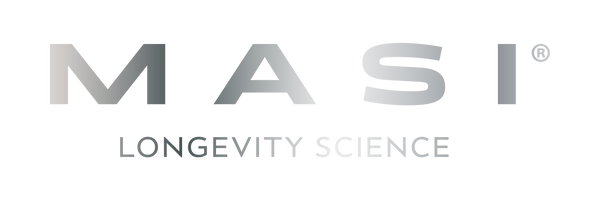Sleep monitoring tools are everywhere - from smartwatches to mobile apps. But they come with big ethical concerns like privacy risks, data security issues, and access barriers. Here's what you need to know:
- Wearable Devices: Track heart rate, sleep cycles, and more, but they can expose sensitive data and are often expensive.
- In-Bed Sensors: Non-intrusive and sync with smart home devices, but they rely on internet connectivity, raising security risks.
- Mobile Apps: Convenient and widely available, but their accuracy is lower, and many share data with third parties.
Quick Comparison
| Technology Type | Privacy Risks | Data Security Issues | Accessibility Challenges |
|---|---|---|---|
| Wearables | Data used for ads; limited oversight | High hacking risk; biometric data | Costly; less common in lower-income groups |
| In-Bed Sensors | Detect others in the room | Vulnerable to hacking via networks | Expensive; requires specific hardware |
| Mobile Apps | Data shared with third parties | Often store unencrypted data | Most accessible but less accurate |
Why it matters: Sleep monitoring tools are growing fast, but without stronger protections, they risk harming user privacy and widening health gaps. Stay informed to make smarter choices about your sleep health.
AI in Health Tech: Sleep, Recovery, Data Privacy, and more - SUPERHUMAN Podcast Ep. 3 w/ Krish Jajoo
1. Wearable Sleep Trackers
Wearable sleep trackers - like smartwatches, fitness bands, and smart rings - are becoming a staple for many. In 2023, the global healthcare wearables market was valued at $33.85 billion, with projections suggesting it could exceed $250 billion by 2030 [5]. These devices monitor physiological data such as heart rate, blood pressure, sleep cycles, and physical activity. While their capabilities are impressive, they also raise concerns about privacy, data security, and equitable access.
Privacy Protections
Most wearable devices today prioritize user consent and transparency. They offer clear options for opting out of data collection, along with detailed explanations of how data is gathered, stored, and shared [5]. To protect user identities, anonymization techniques are employed in research and analysis, allowing for valuable health insights without compromising individual privacy. However, as technology advances, maintaining strong privacy safeguards remains a constant challenge.
Even with these privacy measures, securing the data collected by these devices is equally critical.
Data Security Features
The security of wearable devices has come under scrutiny, especially after incidents like the 2018 breach of Under Armour's MyFitnessPal, which exposed data from over 150 million users [8]. In response, manufacturers have introduced encryption, two-factor authentication, end-to-end encryption, and hardware-based security features like secure boot processes and encrypted storage [5]. Regular security audits and automatic logout functions also add layers of protection. Despite these efforts, vulnerabilities persist. In December 2022 alone, over 10.54 million IoT-related cyberattacks were recorded, with 75% of professionals reporting a rise in cyber threats over the previous year [7]. To stay safer, users are encouraged to update firmware regularly, use strong passwords, enable two-factor authentication, and carefully review app permissions [7][6].
While security measures are improving, another pressing issue is ensuring these devices are accessible to all.
Accessibility and Health Equity
Wearable sleep trackers have the potential to make health monitoring more accessible, but they often fall short in reaching underserved populations. For example, only 18.34% of cardiovascular disease patients reported using healthcare wearables in the past year [9]. Cost is a significant barrier, as health-focused devices are typically priced much higher than basic fitness trackers [10]. Adoption rates also vary widely by income, race, ethnicity, and gender, with higher-income, non-Hispanic White, and female users being more likely to use these devices [9]. Additionally, many devices are not designed with the needs of underserved communities in mind. Addressing these gaps will require targeted policies, affordable device options, and more inclusive design practices. These disparities highlight the broader ethical questions surrounding personalized sleep monitoring and its role in advancing health equity.
2. In-Bed Sleep Sensors
In-bed sleep sensors offer a non-intrusive way to monitor sleep patterns. By leveraging radar technology and microphones, these devices track chest movements and body motions, providing insights into sleep behaviors such as snoring and coughing [12]. Many of these systems can sync with smart home devices, adjusting the bedroom environment in real-time to encourage better sleep [1]. However, the use of this technology brings up ethical concerns, particularly around privacy, data security, and fair access - issues that mirror those seen with wearable sleep trackers.
Privacy Concerns
Like wearables, in-bed sensors come with unique privacy challenges. Radar-based systems, for instance, can inadvertently detect other individuals in the room, creating additional privacy risks. Compounding this issue is the absence of specific federal regulations governing sleep tracking technologies, which often leaves companies free to decide how they manage sensitive health data [11]. To protect themselves, users should carefully review the privacy policies of these devices and think twice before sharing their data with third-party services [1].
Data Security Challenges
While manufacturers incorporate measures like strong authentication protocols and role-based access controls, security gaps remain. Data sent to cloud storage, especially through third-party apps, can travel over insecure networks, leaving it vulnerable to unauthorized access or misuse, such as targeted advertising [13]. To minimize risks, users should ensure their apps and firmware are up to date and avoid downloading untrustworthy software or clicking on suspicious links [13]. These security concerns add another layer of complexity to the ethical considerations surrounding these devices.
Barriers to Access and Equity
Beyond privacy and security, affordability is a significant hurdle for many people interested in in-bed sleep sensors. For instance, 57.2% of survey respondents cited cost as a major barrier, with younger users and those from lower-income households feeling the pinch the most [14]. Privacy and security concerns also disproportionately deter vulnerable groups, such as individuals with annual household incomes below $30,000 or those identifying as Asian or Black, from adopting these technologies [14]. To address these issues, manufacturers need to lower costs, implement transparent data handling practices, and provide resources tailored to diverse communities.
sbb-itb-4f17e23
3. Mobile Sleep Monitoring Apps
Mobile sleep monitoring apps represent a step forward from wearables and in-bed sensors, but they come with their own set of ethical concerns. These apps use a smartphone's built-in sensors, such as accelerometers and microphones, to track movement and sound during sleep, offering insights into sleep quality. However, the collection of sensitive health data raises serious questions about privacy, data security, and equitable access.
Privacy Protections
Because they handle sensitive personal data, sleep monitoring apps are a tempting target for cyberattacks [15]. The Federal Trade Commission (FTC) has emphasized that health app companies must comply with the Health Breach Notification Rule, which mandates immediate consumer notifications in case of data breaches [15].
"While this Rule imposes some measure of accountability on tech firms that abuse our personal information, a more fundamental problem is the commodification of sensitive health information, where companies can use this data to feed behavioral ads or power user analytics." - FTC Chair Lina M. Khan [15]
Violations of this rule can result in penalties of up to $43,792 per day per violation [15]. To build trust, many apps are adopting transparent privacy policies and giving users more control over their data. Techniques like data anonymization - using tokenization, masking, and aggregation - are increasingly common [18]. Some apps are also turning to edge AI processing, which processes data directly on the device rather than sending it to external servers, minimizing privacy risks [18].
Data Security Features
The healthcare industry continues to face alarming data breach risks. In 2022 alone, breaches impacted nearly 50 million individuals, with average costs climbing to $10.93 million - a 53.3% increase since 2020 [16][20]. To counter these threats, apps are implementing advanced encryption and conducting regular audits to ensure platform security [18].
Secure storage practices, such as segmented storage, regular backups, and automatic data purging based on retention policies, further enhance protection [18]. Many apps also use biometric authentication, like fingerprint or facial recognition, which over 70% of users prefer for both convenience and security. Additionally, session management features automatically log users out after inactivity, adding another layer of protection [16][18]. Compliance with major privacy laws remains a priority for these platforms [18].
Accessibility and Health Equity
While technical safeguards are crucial, ensuring equitable access to these apps is just as important. Despite the widespread availability of mobile sleep monitoring tools, digital divides persist. For instance, a 2020 survey revealed that 53% of Americans consider the Internet essential, yet Black and Hispanic adults are less likely to have reliable broadband access compared to non-Hispanic White adults [21]. Among Black adults over 65, fewer than half consistently use the Internet, even though 61% of Black Internet users over 50 engage with platforms like Facebook and Twitter [21].
"Digital health equity and inclusion, defined as the fair and just opportunity to engage with digital health tools to support good health outcomes, is equally crucial as health equity in sleep medicine and research." - Judite Blanc, PhD, et al. [21]
To address these gaps, researchers have developed creative solutions. For example, during the COVID-19 pandemic, a team created "The MIL Box", a remote health and sleep monitoring tool designed for NIH-funded studies on sleep patterns in Black and Latino communities. Participants who lacked devices or reliable Internet were provided with WiFi-enabled iPhones or iPads [21]. Other effective strategies include designing user-friendly, human-focused technology, creating culturally and linguistically appropriate materials, and training staff to overcome barriers faced by marginalized groups [21].
With 87% of consumers expressing concerns about data privacy and 81% willing to invest time and money to protect it [17], addressing both accessibility and privacy issues is vital. These apps, like other sleep monitoring tools, must navigate the delicate balance between innovation and ethical responsibility. This challenge aligns with MASI Longevity Science's dedication to privacy, security, and inclusive design.
Advantages and Disadvantages
Building on the ethical considerations discussed earlier, let’s dive into the specific pros and cons of different sleep monitoring technologies. Each type of technology offers unique benefits but also comes with its own set of challenges. Understanding these trade-offs can help consumers make smarter choices about their sleep tracking tools.
Wearable sleep trackers are great for capturing detailed biometric data that smartphones simply can’t measure. However, they raise serious privacy concerns. Experts have flagged the potential for these devices to be used for surveillance, especially since there’s little regulatory oversight in this space [12]. Radar monitoring and anonymized data used for targeted advertising are particularly troubling issues [12][22].
In-bed sleep sensors, on the other hand, are less intrusive since they don’t require you to wear anything. But their reliance on internet connectivity introduces significant security risks. Hackers could potentially gain access to sensitive information, including sleep patterns and personal habits, as has been shown in past breaches involving connected home devices [22].
Mobile sleep apps are the most convenient option because nearly everyone has a smartphone. However, this convenience comes at the expense of accuracy. These apps rely on indirect measurements that can be influenced by external factors, making them less reliable than clinical methods [23]. Additionally, some apps store unencrypted sleep audio, leaving users vulnerable to data breaches. Worse still, data is often shared with third parties, primarily for advertising purposes [19].
Cost is another major factor across all these technologies, especially for younger people and those with lower incomes [24]. Privacy concerns also vary by demographic, with marginalized groups more likely to encounter data security issues.
Despite these challenges, adoption rates remain high. As Elgar Fleisch, deputy dean of ETH Zurich, notes:
"People will use a technology if the perceived benefit is larger than the perceived risk" [22].
This is reflected in the fact that 91% of app users agree to terms and conditions without reading them, even though 67% say that anonymity is important to them [19].
| Technology Type | Privacy Protections | Data Security Features | Accessibility / Health Equity |
|---|---|---|---|
| Wearable Sleep Trackers | Vulnerable to radar monitoring; anonymized data often used for targeted advertising | Biometric data collection increases exposure risk; devices are prone to hacking | Cost barriers affect 57.2% of users, especially younger and lower-income individuals |
| In-Bed Sleep Sensors | Internet connectivity can expose sensitive data, including sleep habits | High risk of hacking; can expose sleep sounds and personal activities | Requires dedicated hardware, limiting portability and accessibility |
| Mobile Sleep Apps | Data frequently shared with third parties; 66% of them collect data for ads | Often store unencrypted audio files, increasing susceptibility to unauthorized access | Most accessible due to smartphones, though accuracy is lower because of indirect measurements |
These trade-offs highlight the delicate balance between technological innovation and ethical concerns. The current regulatory framework is inadequate, particularly for sleep apps, which don’t offer the same privacy protections found in clinical settings [19]. With projections estimating 30 billion connected devices by 2030, the urgency for stricter regulations is clear [22].
Ultimately, it’s crucial to prioritize technologies that safeguard user privacy and data security while promoting fair access for all. At MASI Longevity Science, we’re committed to ensuring that technological advancements don’t come at the cost of user trust or security.
Conclusion
After examining wearables, in-bed sensors, and mobile apps, it’s clear that personalized sleep monitoring brings significant ethical challenges that require immediate attention. With the mobile health market expanding rapidly, there’s an urgent need for stronger safeguards to protect users and their data [25].
Ethical frameworks must prioritize informed consent, address the risks of over-medicalization, and ensure fair access to these technologies. One pressing concern is the rise of "orthosomnia", where the relentless pursuit of perfect sleep can actually harm well-being [4]. As Erinn Gilson insightfully put it:
"Across the diverse instances of vulnerability, a common sense of vulnerability is underscored: vulnerability is defined by openness and, more specifically, to be vulnerable is to be open to being affected and affecting in ways that one cannot control" [4].
Health equity is another critical area. Sleep health disparities often mirror broader health inequities, disproportionately affecting marginalized groups. For example, Black adults frequently report shorter sleep durations compared to white adults, and sleep disorders are underdiagnosed in nonwhite and low-income populations [26]. Any ethical framework must ensure that these technologies are accessible to all, rather than exacerbating existing gaps.
Another pressing issue is the rise in internet-related crimes [2], which underscores the need for comprehensive regulatory oversight. The current fragmented approach to regulation falls short. To truly protect users, sleep monitoring apps must implement privacy measures comparable to those used in clinical settings.
Looking ahead, the industry must focus on interoperability, data quality standards, and empowering users with tools that make their sleep data meaningful and actionable [3]. As Winslow and Mills emphasized:
"All applications should be private and transparent, and support individual consent, accountability and fairness" [25].
At MASI Longevity Science, we are dedicated to advancing ethical innovation while delivering personalized health benefits. Achieving this balance will require collaboration among developers, healthcare professionals, regulators, and users to ensure privacy, security, and equitable access remain at the forefront.
FAQs
How can I protect my privacy and secure my data when using sleep monitoring devices?
To protect your privacy and personal data when using sleep monitoring devices, begin by thoroughly examining the device's privacy policy. Make sure you understand how your data is being collected, stored, and shared. Look for devices that emphasize data encryption and offer straightforward ways to manage your data-sharing preferences.
It's also important to keep your device's software up to date. Regular updates often include fixes for security vulnerabilities, helping to safeguard your information. Stay aware of your rights regarding personal data, and keep an eye on how your information is being utilized. Taking these steps can help you stay in control of your sensitive health data and keep it secure in today’s digital world.
How can sleep monitoring technologies create health disparities, and what can be done to make them more accessible for everyone?
Sleep monitoring technologies, while promising, can sometimes deepen health disparities. High costs, privacy issues, and limited availability in underserved areas often prevent marginalized or lower-income groups from accessing these tools. This means that the people who might benefit most from such innovations are often left out.
Addressing these gaps requires a multi-faceted approach. Lowering device costs, prioritizing user privacy, and developing solutions that respect diverse cultural needs are key steps. Beyond that, improving digital literacy and increasing access to technology in underrepresented communities can help level the playing field. By tackling these barriers, we can ensure that advances in sleep monitoring reach everyone, regardless of their financial or social circumstances.
What ethical concerns arise from using sleep data for targeted ads, and how can users protect themselves?
Using sleep data for advertising purposes brings up some serious ethical issues, like privacy breaches, misuse of personal information, and potential bias or discrimination. Imagine your sleep patterns - something so personal - being used without your clear consent. It’s easy to see how this could lead to intrusive or even unfair practices.
To stay safe, look for services that are upfront about how they handle your data. Choose platforms that follow privacy-first principles and rely on strong encryption to protect your sensitive information. On top of that, pushing for stricter privacy regulations and ensuring companies get clear, explicit consent before accessing your personal data can go a long way in reducing risks and keeping trust in sleep tracking technology intact.




